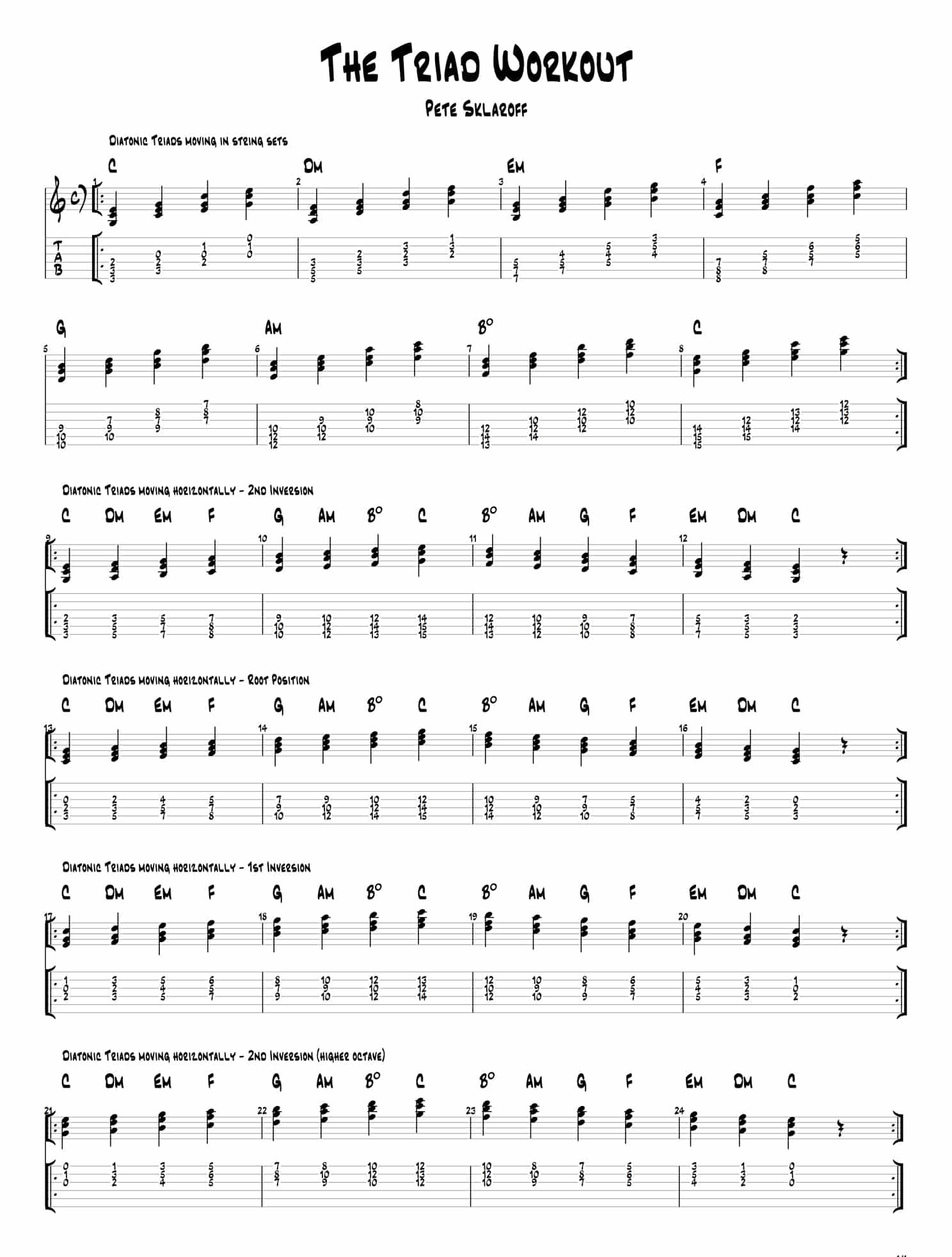Why You Need to Learn Triads
 The Importance of Learning Triads
The Importance of Learning Triads
Triads are the fundamental building blocks of harmony and as we all play a harmonic instrument, we should be as familiar as possible with them. There are four main types of triads in music: major, minor, diminished, and augmented.
Major Triad: A major triad is built with a major third interval between the root and the third, and a perfect fifth interval between the root and the fifth.
Minor Triad: A minor triad is built with a minor third interval between the root and the third, and a perfect fifth interval between the root and the fifth.
Diminished Triad: A diminished triad is built with a minor third interval between the root and the third, and a diminished fifth interval between the root and the fifth.
Augmented Triad: An augmented triad is built with a major third interval between the root and the third, and an augmented fifth interval between the root and the fifth.
Each of these can be built on any of the twelve notes in the Western musical scale, resulting in a total of 48 distinct triads if we count all the enharmonic equivalents.

Triads appear in almost all forms of modern music and having a good working knowledge of their construction (and fingerboard locations) is considered essential for all guitarists.
In this mini-lesson I have written out some exercises using the diatonic triads present in the C major scale. I find these studies very useful to practice and they are designed to help you internalise the various triad shapes and develop your muscle memory. I call this series of exercises ‘The Triad Workout’.
The Triad Workout
In the exercises below, we will just be using three types of triad: Major, Minor and Diminished
In the first exercise (bars one to eight) you play the various triads across the fingerboard using string sets of three adjacent strings at a time. You begin on the lowest three strings and end up finally on the top three strings.
This is a great practice routine to get the various triad forms under your fingers and you could play this with a pick or finger-style. From bar nine you have a similar series of exercises, however you now play along the fingerboard rather than moving across.
This shift in approach will help solidify your understanding of the triads in different fingerboard locations. The triad ‘shapes’ remain the same overall as in the first exercise.

After completing the exercises, consider applying these triads to your favorite songs to see their practical application. I will cover more on triads in future lessons.
Here is a PDF version of the exercises: The Triad Workout PDF
Audio File here:











